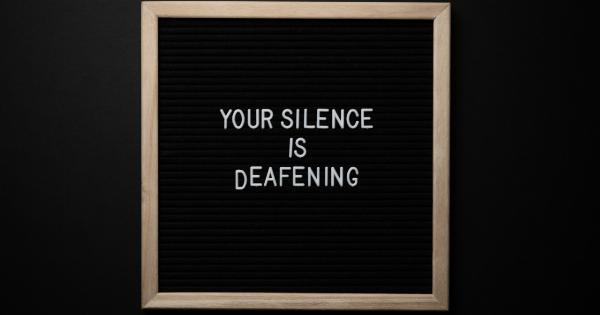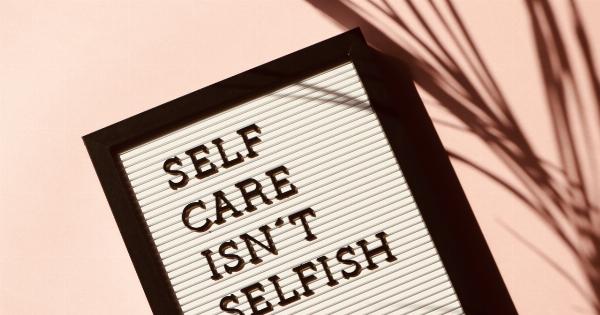Stress has become an unfortunate reality for many people in today’s fast-paced world. The demands of work, family, and personal life can often leave individuals feeling overwhelmed and burnt out.
While there are various strategies to combat stress, one often overlooked solution is embracing exercise limitations. Rather than viewing exercise limitations as a hindrance, they can actually be a powerful tool for managing stress and finding balance in life.
This article will explore the concept of exercise limitations, their impact on stress levels, and techniques for overcoming stress by embracing these limitations.
The Connection Between Exercise and Stress
Exercise has long been recognized for its positive impact on mental health and stress reduction. However, it is important to note that exercise, when approached in a healthy and balanced manner, can be beneficial.
When exercise becomes excessive or compulsive, it can lead to additional stress on the body and mind. This is where exercise limitations come into play.
Understanding Exercise Limitations
Exercise limitations refer to acknowledging and respecting the body’s natural boundaries, both physically and mentally.
Every individual has their own unique limitations, which can be influenced by factors such as age, fitness level, health conditions, and personal circumstances. Embracing exercise limitations means accepting and working within these boundaries, rather than pushing past them in an unsustainable and potentially harmful way.
The Negative Consequences of Ignoring Exercise Limitations
When exercise limitations are ignored, it can lead to a variety of negative consequences, including increased stress levels.
Overtraining or engaging in exercise beyond one’s limits can cause physical exhaustion, heightened anxiety, disturbed sleep patterns, and a compromised immune system. These effects can contribute to a vicious cycle of stress and burnout, ultimately undermining overall well-being.
Recognizing Signs of Overexertion
It is essential to learn to recognize the signs that we may be pushing ourselves too hard.
Some common indicators of overexertion include persistent fatigue, decreased motivation, difficulty recovering after exercise, frequent injuries, and a decline in performance. Paying attention to these signs and symptoms allows us to make necessary adjustments and prevent further stress accumulation.
Embracing Your Exercise Limitations
Instead of viewing exercise limitations as a setback, it is important to reframe them as an opportunity for self-care, balance, and sustainable progress. Embracing your exercise limitations involves the following strategies:.
1. Set Realistic Goals
When it comes to exercise, setting realistic and achievable goals can prevent feelings of disappointment and failure, reducing stress in the process.
Take into account your current fitness level, available time, and personal circumstances when establishing goals. Celebrate small milestones along the way, as these can help maintain motivation and keep stress in check.
2. Listen to Your Body
One of the key aspects of embracing exercise limitations is learning to listen to your body. Pay attention to how you feel before, during, and after exercising.
If you experience excessive fatigue or pain, it may be a sign that you need to reduce the intensity or duration of your workouts. Remember that rest and recovery are crucial components of a well-rounded exercise routine.
3. Diversify Your Activities
Rather than focusing solely on one type of exercise, consider diversifying your activities. Engaging in a variety of physical activities not only reduces the risk of overuse injuries but also keeps workouts interesting and enjoyable.
Diversification allows you to work different muscle groups and can be an effective way to overcome plateaus or boredom that often lead to stress.
4. Seek Professional Guidance
If you are unsure about your exercise limitations or need guidance in developing a suitable workout routine, consider consulting a fitness professional.
A trained expert can assess your individual needs and limitations to create a program that aligns with your goals while prioritizing your overall well-being.
5. Practice Mindfulness
Mindfulness can be a powerful tool in managing stress and becoming more attuned to your body’s needs.
Incorporating mindfulness techniques such as deep breathing, meditation, or yoga into your exercise routine can help you stay present and listen to your body’s signals. This awareness can prevent overexertion and promote a healthier, more balanced approach to exercise.
6. Prioritize Rest and Recovery
Rest and recovery are essential for allowing the body to repair and rebuild after exercise. Failing to prioritize rest can lead to burnout and increased stress levels.
Make sure to incorporate rest days into your routine and listen to your body’s cues for when it needs a break. Sleep is also a crucial component of recovery, so aim for an adequate amount of quality sleep each night.
7. Build a Support System
Having a support system can greatly contribute to managing stress and embracing exercise limitations. Share your goals, struggles, and triumphs with family, friends, or fellow fitness enthusiasts.
Having a reliable support network can offer encouragement, accountability, and valuable advice when navigating exercise limitations and finding balance in your physical activities.
8. Practice Self-Compassion
Embracing exercise limitations requires cultivating a sense of self-compassion. It is important to acknowledge that everyone has limitations and that it is not a reflection of weakness or inadequacy.
Treat yourself with kindness, understanding, and patience throughout your fitness journey. Remember that progress is individual and that prioritizing your well-being is essential.
9. Focus on Benefits Beyond Physical Appearance
While physical appearance can be a motivation for exercise, it is crucial to also recognize the numerous other benefits that physical activity provides.
Exercise is known to boost mood, improve cognitive function, increase energy levels, and enhance overall well-being. By shifting the focus away from solely aesthetic goals, you can reduce stress associated with unrealistic expectations and foster a healthier mindset.
10. Engage in Stress-Reducing Activities
Finally, alongside exercise, incorporate stress-reducing activities into your routine. This could include activities such as spending time in nature, engaging in hobbies, practicing relaxation techniques, or connecting with loved ones.
By diversifying your stress-reduction strategies, you create a comprehensive approach to manage stress levels more effectively.
Conclusion
Embracing your exercise limitations is a powerful way to reduce stress and prioritize your overall well-being.
By setting realistic goals, listening to your body, diversifying activities, seeking guidance when needed, practicing mindfulness, prioritizing rest and recovery, building a support system, practicing self-compassion, focusing on overall benefits, and engaging in stress-reducing activities, you can find a balanced approach to exercise that supports your mental and physical health. Remember, exercise should enhance, not detract from, your overall well-being.






























